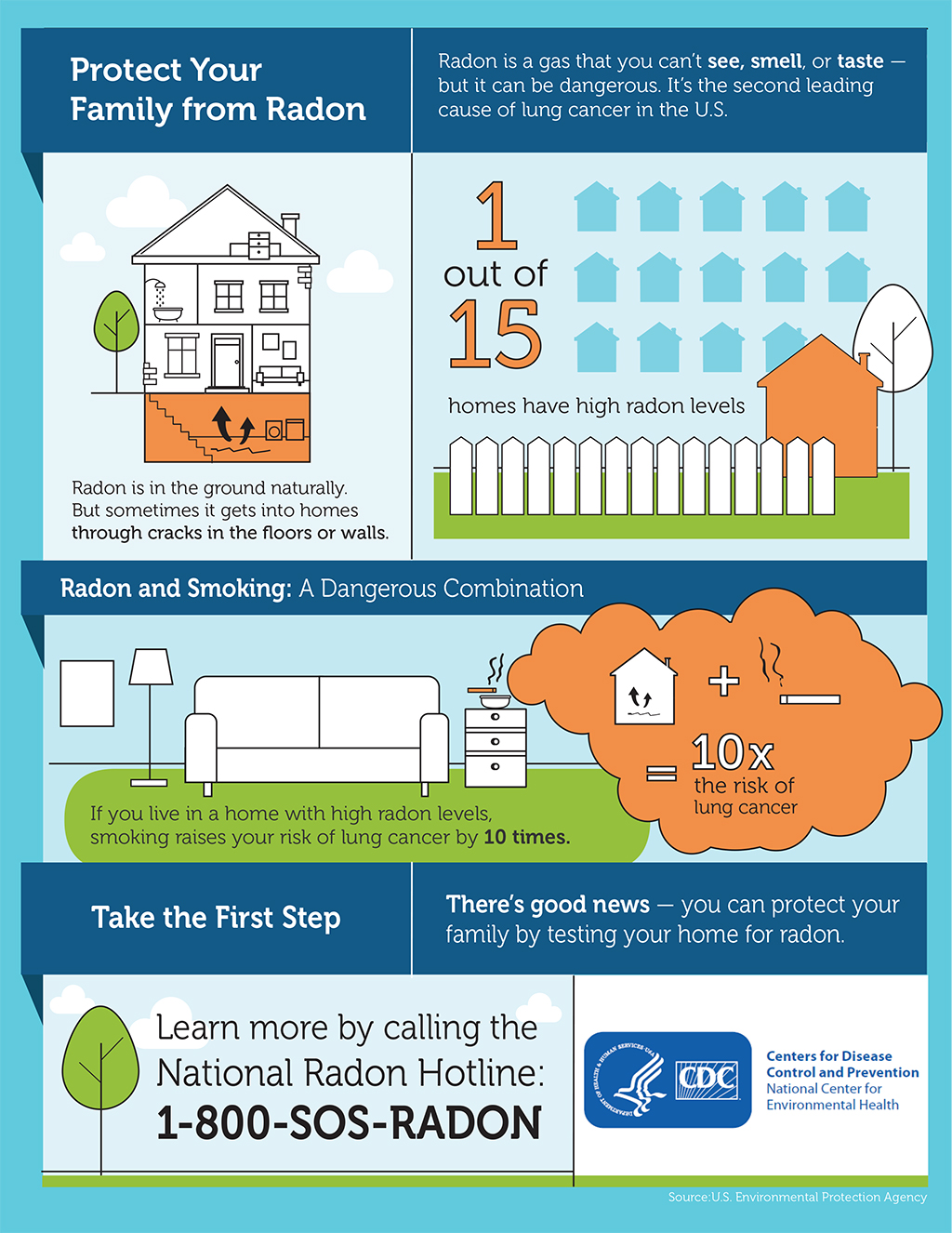
January is National Radon Awareness Month. | Download this photo.
January is National Radon Awareness Month
The second leading cause of lung cancer might be lurking in your home
Jan. 23, 2018
MANHATTAN, Kan. — Lung cancer is usually associated with smoking cigarettes and other tobacco products, but the second leading cause of the disease is something that you will never see.
According to the Centers for Disease Control and Prevention, radon is the number one cause of lung cancer for non-smokers, and the second leading cause of lung cancer overall.
“Radon is an odorless, tasteless, colorless, naturally-occurring radioactive gas that comes from the soil underneath our homes,” said Bruce Snead, an energy specialist with K-State Research and Extension. “Outdoors it's not a concern — but indoors it can build up, increasing our exposure to radiation, which increases our potential for developing lung cancer.”
Testing for radon is easy. Test kits can be purchased through many local K-State Research and Extension offices, and other local and state agencies, for a nominal charge. For the most accurate results, Snead said the test must be conducted in the right location within the home.

When installing a radon test kit in your home, it's important to read and follow directions carefully. The instructions will also help you identify the best location to place your test. | Download this photo.
“The best place to test is on the lowest, lived-in level,” he said. “If you have a basement with a family room, bedroom, living room -- any space like that, that's where you should test. If your basement is totally storage, then you probably want to test on the first floor, in a bedroom, living room, or family room.”
The tests typically include a prepaid mailing envelope for returning the test to a lab for processing. The lab will send results by mail, as well as posting the results online, according to the serial number on your test kit.
If the initial test results in a reading of 4 or higher, a longer follow-up test is recommended. If the follow-up test confirms the presence of elevated radon levels, special equipment can be installed to lower radon levels within your home.
Snead said the typical radon mitigation system involves a permanently-installed venting pipe and fan. “It works by drawing, or sucking the radon from beneath the home with a small, continuously running fan, and venting it into the air above your home, where it dissipates into the atmosphere,” he said.
 A home with elevated radon levels can be easily fixed. A pipe is placed under the foundation of the home (left); a fan unit then draws the radon up and into the air (right). | Download this photo.
A home with elevated radon levels can be easily fixed. A pipe is placed under the foundation of the home (left); a fan unit then draws the radon up and into the air (right). | Download this photo.
“The standard or typical range for a radon reduction system is about $1,500, nationally. It's much like many other common home repairs, in terms of cost. The contractor will install it according to standards, and guarantee to get the radon level down below 4 -- that's a key point."
Finding a qualified contractor to install a radon mitigation system will require some research, but Snead said there are tools to help.
“Contact your state radon program to see if they have a list of certified or require certified individuals or you can contact one of two national radon proficiency programs where contractors voluntarily meet guidelines and standards,” Snead said. “Those are the National Radon Proficiency Program and the National Radon Safety Board and both have websites where you can search for contractors in your state or area.”
Any home can be fixed, he said, and the discovery of an elevated radon level is neither a reason to sell a home and move, or to resist buying a new home that you’ve had your eye on (see sidebar).
The typical systems that reduce radon can be installed in a day, are often effective within 24 hours, and you can live in it in comfort and safety.
Snead added that while $1,500 may sound high, when compared to the potential costs of fighting lung cancer, it's a bargain.
"You would spend hundreds of thousands of dollars dealing with lung cancer, so to try and prevent that for a cost of $1,500 is probably a pretty good deal," Snead said.
“Every home has radon and if it's high, every home can be fixed. It's really important that you test your home, fix if necessary, and save a life.”

